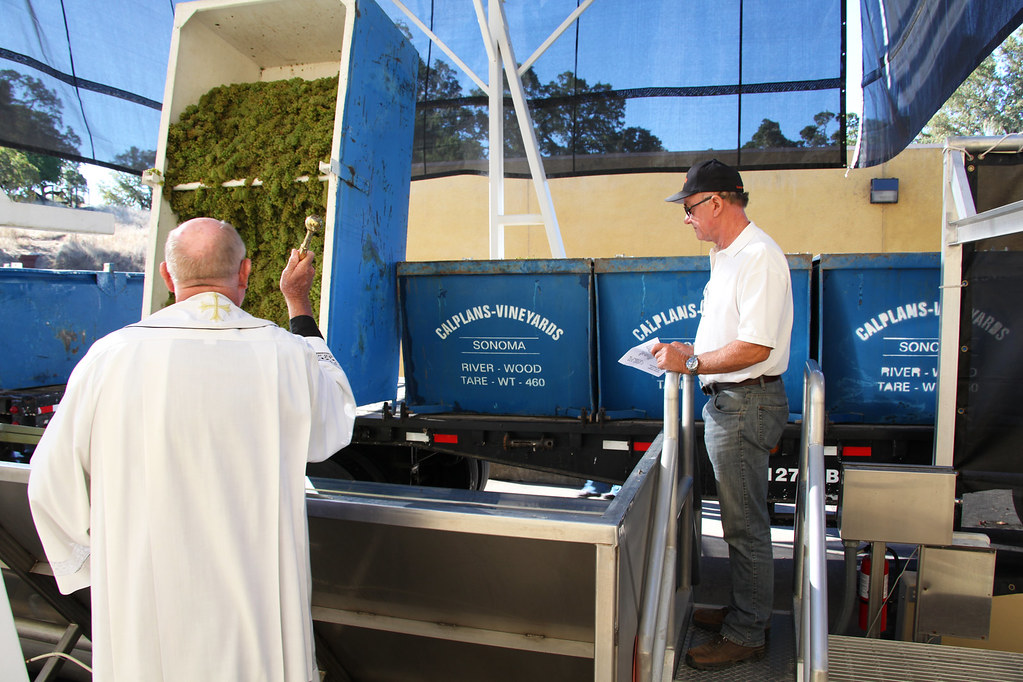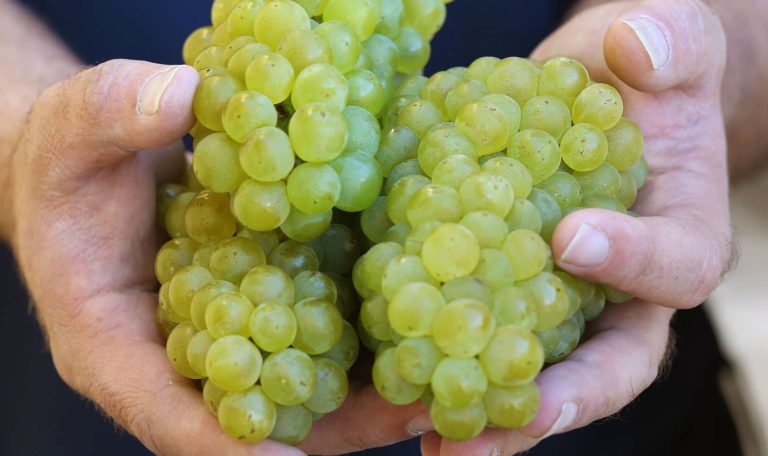And just like that, the 2013 growing season has come to an end. The last of the Cabernet Sauvignon grapes passed through the destemmer and into the winery around 5 p.m. on Thursday, October 10, 2013. Roughly one month after first clusters were blessed on the Jordan crush deck, it is now time to leave the changing colors of the vineyards behind and focus on the action indoors. Inside the cellar walls, the production team is busy with bâtonnage on the barrel fermented Chardonnay, malolactic fermentation in the oak uprights of the Merlot and Malbec, and pump-overs with the remaining Cabernet Sauvignon and Petit Verdot blocks still undergoing primary fermentation. With harvest completed, the outcome of the relentless viticultural attention required to compete with Mother Nature’s authority this year is clearly present throughout the winery in the form of rewarding, perfumy esters. It is the marking of yet another stellar Jordan vintage.
For a summary of wine quality once 2013 wines were released, visit our blog, Was 2013 a Good Year for California Wine?
A warm, early start
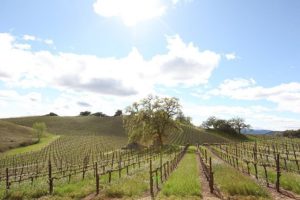
A summer curve ball
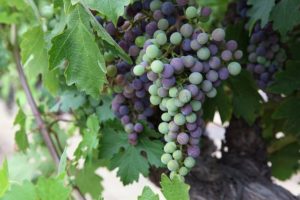
A cooling trend
Like the start of a new chapter, 2013 temperatures suddenly decreased to a more moderate level in August with impeccable timing. The cooler temperatures forced the season’s pace to ease up. With all of our grape varieties in the final ripening stage of development at that time, these cooler mid-summer days allowed for the berries to retain their natural acidity and develop even brighter and more concentrated fruit character, all while keeping sugar levels low; it was the best recipe for perfectly balanced grapes.
A calm with a nail-biting finale
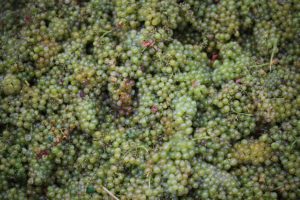 Thorough vineyard sampling and juice tasting by the production team determined September 6 as the official start date of the 2013 harvest for our Russian River Chardonnay. Taking place ten days earlier than in 2012, the clusters that arrived to the winery’s crush deck this year were at an unprecedented quality level according to Winemaker Rob Davis. A heat spike in the high nineties September 6-9 set the rate of maturation in the Alexander Valley back into overdrive, bringing the first of the Merlot and Malbec grapes in on the 12th, and some of our earliest ripening Cabernet Sauvignon just two days later. Fluctuations in temperature for the remainder of harvest in addition to minor rainfall on September 21 and the 30th had us biting our nails and wondering if an Indian summer would ever come. The cooling trend and rain created somewhat of a game between Mother Nature and Rob: so much for the early-season thoughts of a pre-rain harvest. With the thinner-skinned varieties safely in the winery and well into vinification, the rain proved to be of no concern. According to Rob and his empirical wisdom fabricated through 38 harvests with Jordan, a light rain simply provides a free cleansing to the thicker skinned, later-ripening, raincoat-wearing varieties. One such variety, the Petit Verdot from the Jordan Estate, finally found its way into the winery on October 5–the week of warm, sunny days returned.
Thorough vineyard sampling and juice tasting by the production team determined September 6 as the official start date of the 2013 harvest for our Russian River Chardonnay. Taking place ten days earlier than in 2012, the clusters that arrived to the winery’s crush deck this year were at an unprecedented quality level according to Winemaker Rob Davis. A heat spike in the high nineties September 6-9 set the rate of maturation in the Alexander Valley back into overdrive, bringing the first of the Merlot and Malbec grapes in on the 12th, and some of our earliest ripening Cabernet Sauvignon just two days later. Fluctuations in temperature for the remainder of harvest in addition to minor rainfall on September 21 and the 30th had us biting our nails and wondering if an Indian summer would ever come. The cooling trend and rain created somewhat of a game between Mother Nature and Rob: so much for the early-season thoughts of a pre-rain harvest. With the thinner-skinned varieties safely in the winery and well into vinification, the rain proved to be of no concern. According to Rob and his empirical wisdom fabricated through 38 harvests with Jordan, a light rain simply provides a free cleansing to the thicker skinned, later-ripening, raincoat-wearing varieties. One such variety, the Petit Verdot from the Jordan Estate, finally found its way into the winery on October 5–the week of warm, sunny days returned.
First impressions of the 2013 wines
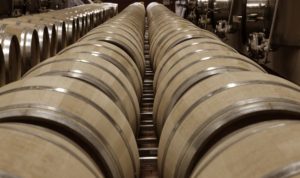 In winemaking, quality always comes with cost and sacrifice. In 2013, what began as an ultra-high-yielding vintage, was gradually normalized through repetitive passes through the vineyards where precision viticulture techniques were applied both proactively and reactively to the season’s schizophrenic personality. Barrel samples of the 2013 Chardonnay are showing bright with the characteristic aromas and flavors of Fuji apple and Asian pear but with a balance of depth, acidity and mid-palate minerality that transcends previous vintages. Although the nearly sixty different vineyard components for the Cabernet Sauvignon blend are just in their beginning stages of development, the Cabernet Sauvignon is already exuding classic layers of cassis and cherry, a brilliant acidity and perfectly developed silky tannins. The Merlot is soft, full and round with a plush balance of red and black fruit that will play a beautiful supporting role to the Cabernet, and the Petit Verdot from the Jordan Estate is as full of ripe blueberry and violet aromas as we ever could have hoped for. The potential for the 2013 is promising to say the least; we never imagined that it could rival the 2012…Amazing!
In winemaking, quality always comes with cost and sacrifice. In 2013, what began as an ultra-high-yielding vintage, was gradually normalized through repetitive passes through the vineyards where precision viticulture techniques were applied both proactively and reactively to the season’s schizophrenic personality. Barrel samples of the 2013 Chardonnay are showing bright with the characteristic aromas and flavors of Fuji apple and Asian pear but with a balance of depth, acidity and mid-palate minerality that transcends previous vintages. Although the nearly sixty different vineyard components for the Cabernet Sauvignon blend are just in their beginning stages of development, the Cabernet Sauvignon is already exuding classic layers of cassis and cherry, a brilliant acidity and perfectly developed silky tannins. The Merlot is soft, full and round with a plush balance of red and black fruit that will play a beautiful supporting role to the Cabernet, and the Petit Verdot from the Jordan Estate is as full of ripe blueberry and violet aromas as we ever could have hoped for. The potential for the 2013 is promising to say the least; we never imagined that it could rival the 2012…Amazing!
